Night at the Museum: Stargazing at Science Centre Singapore
We can see stars in Singapore meh? Go behind the scenes at one of Singapore's few public observatories to learn more about the vast skies above us and hear from our friendly neighbourhood science educators helping us peer into space.
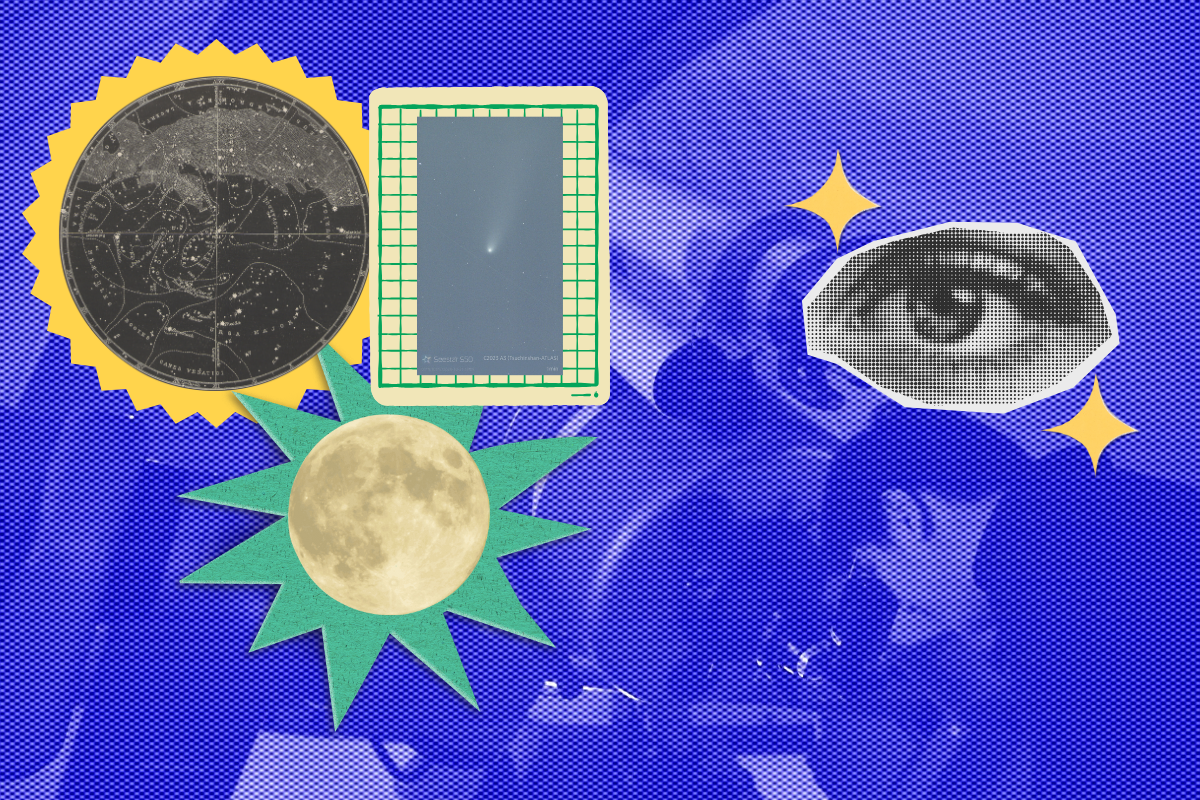
Ever belted out Coldplay’s “A Sky Full of Stars” and wondered what it’s like to see a celestial panorama? You may be surprised to know that Science Centre Singapore has been hosting public stargazing sessions for years.
The Science Centre Observatory is one of the rare observatories in the world located next to the Equator. Singapore's equatorial position allows visitors to see constellations in both the northern and southern celestial hemispheres year-round, allowing for more vistas in the sky.
Opened in 1989, the Observatory's main telescope was gifted by the Japanese government. The 40-cm Cassegrain reflector features a unique yoke mount designed for Singapore's geography.
The first large-scale public viewing session was for the return of Halley’s Comet in 1986. Over 12,000 people attended the two overnight sessions to get a glimpse of this once-in-a-lifetime comet.
However, Singapore's infamous tropical weather and cloudy skies can thwart attempts to capture the cosmos. Not to mention, in 2016, Singapore was named the world's most light-polluted country, according to the New World Atlas of Artificial Night Sky Brightness. With Singapore's urbanised landscape and numerous buildings, there are simply not enough dark, unobstructed areas to look up at the sky.
When I ask Senior Science Educator Meng Hwee Lim about a good place in Singapore to stargaze, he jokes, "the graveyard."
"There's going to be probably very little tall trees to block your view. It's going to be a very wide, open area, and it's dark. It's usually really quiet, away from the city lights. That's all the good things you want for stargazing," Lim cracks a smile.
His next best suggestion? "Come to Science Centre."
Li Hui Mok, Manager of Informal Science Programmes, mentions even if there are no large clouds immediately visible to the naked eye, there may be "some clouds [that] are very thin and very high up," making the sky appear dark blue.
For stargazing, "dark blue is the wrong kind of sky,” Mok explains. Ideally the sky should be black, meaning that "there are stars there, just that maybe our eyes are not sensitive enough to it."
Fun fact: the lights on the Science Centre Observatory staircase leading up to the big telescope and the ceiling lights inside the dome are red to help adapt visitors’ eyes to the darkness.
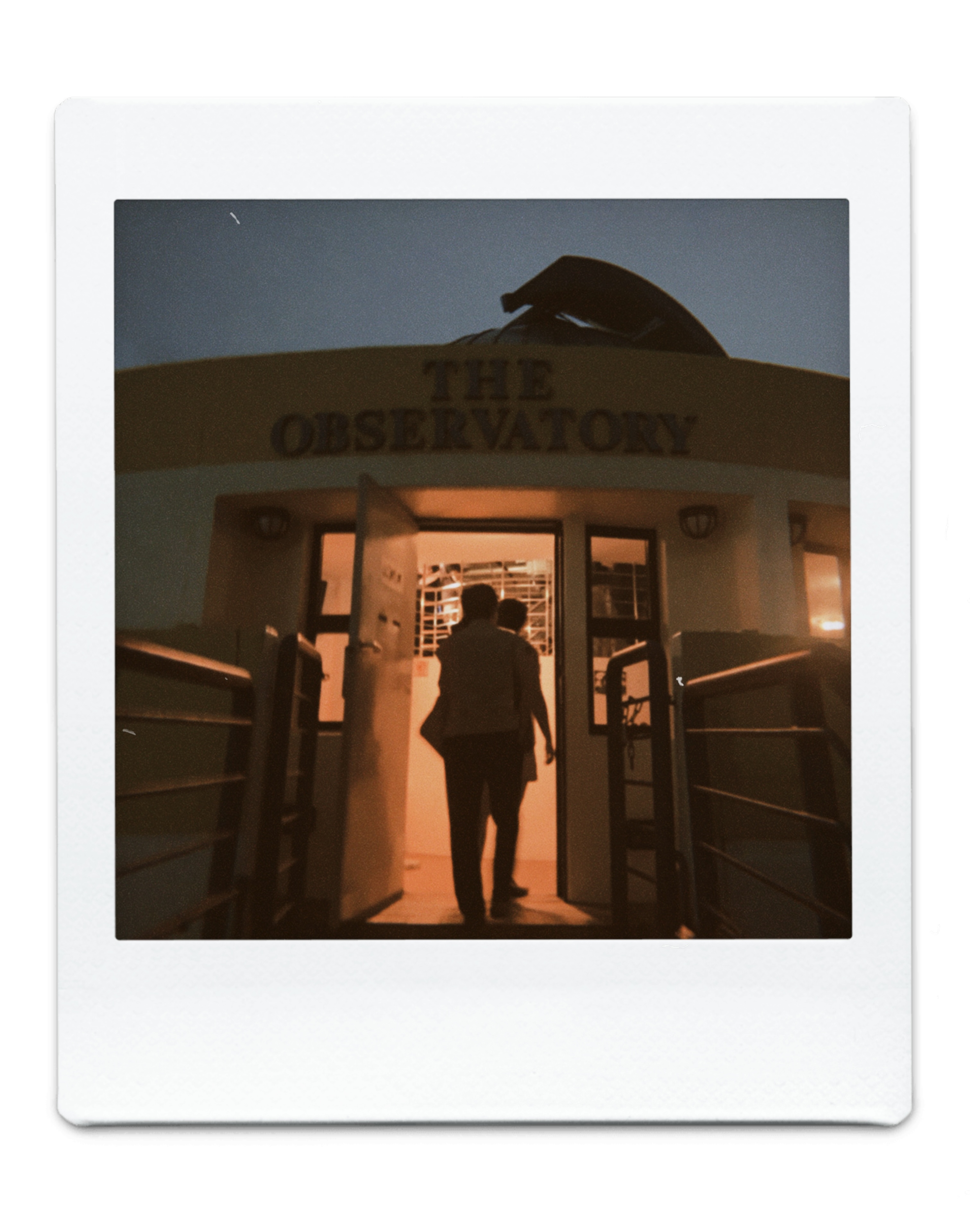
Although finding a truly black sky is a luxury in Singapore, you can find a silver screen that replicates such a sky at the Science Centre. The Science Centre Observatory hosts an immersive live digital planetarium show at the Omni-Theatre on select Friday nights which simulates what visitors might see if weather is favourable.
The Omni-Theatre is Southeast Asia's first 8K digital dome theatre and boasts Southeast Asia’s largest seamless dome screen (23m in diameter), wrapping overhead to envelop the audience in pictures of the stars. Its digital planetarium system lets audiences travel through outer space at light speed with 8K resolution.
Since the celestial objects on view change each month, the educators hosting the show put their own spin while guiding visitors through the skies, choosing to highlight specific objects that interest them. Some educators also weave in mythology about the stars and relevant cultural legends, such as the story of Vega and Altair, two of the bright stars that form the Summer Triangle, also known as the Weaver Maiden and Cowherd, star-crossed lovers in Chinese tradition.
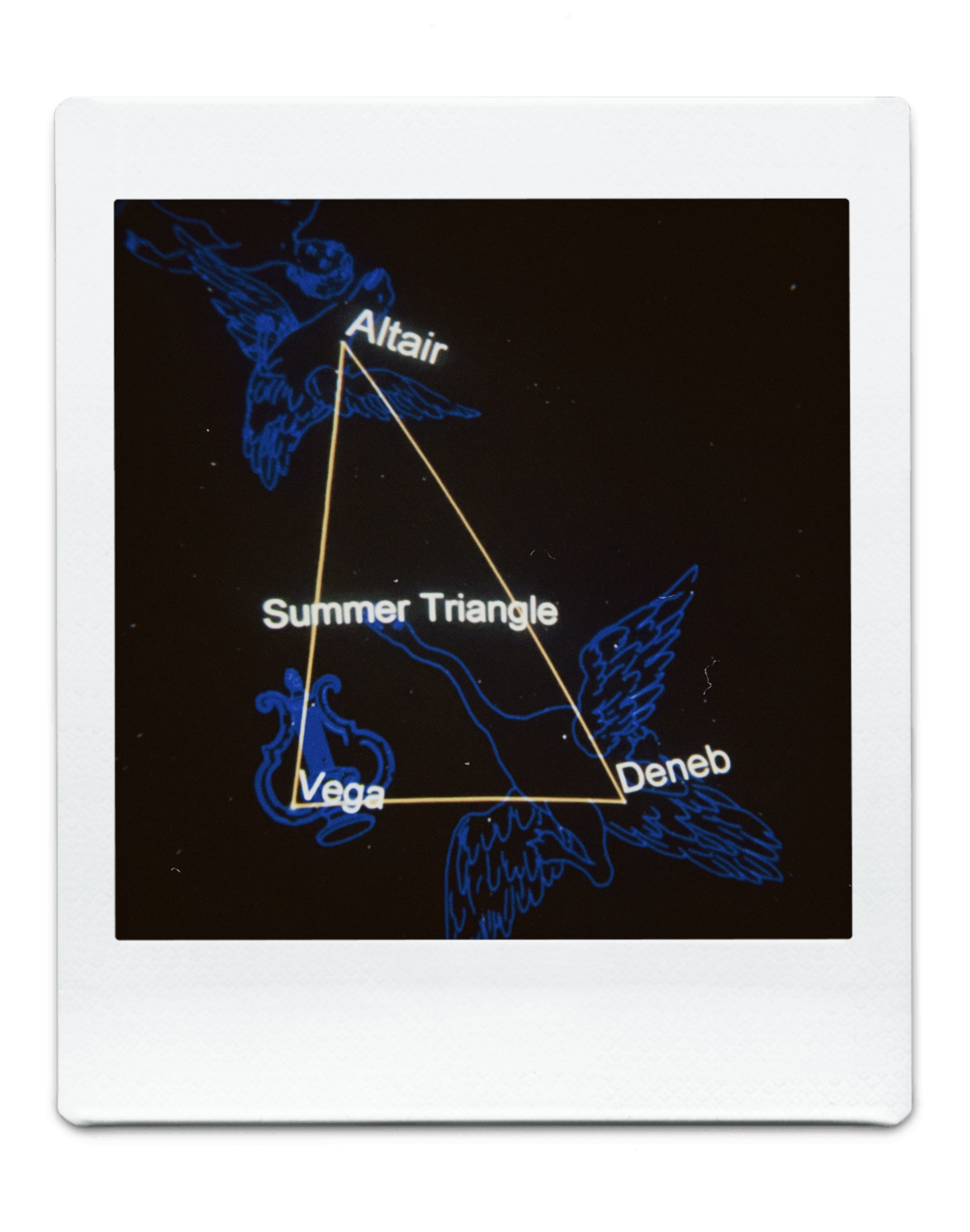
The live show brings visitors on a tour of other planets and moons of interest in our solar system, zipping past Saturn's rings and Jupiter's Io, culminating in a journey to the edge of our observable universe. Finally, the show's CGI animations catapults us back home to our small island, a blimp on the cosmic map, nothing more than a little red dot.
In tongue-and-cheek fashion, the Science Centre staff on Observatory duty don polo shirts with a black-and-white illustration of the Milky Way printed on the entire back, with a small red pin on the edge stating, "YOU ARE HERE."
After the planetarium show on Friday 27 September 2024, Lim reflected, "Some people will say that, yeah, we're pretty small. Nothing matters. But I think we should look at it in the other way. That everything we do matters because we are here. In this great vast universe, we are here."
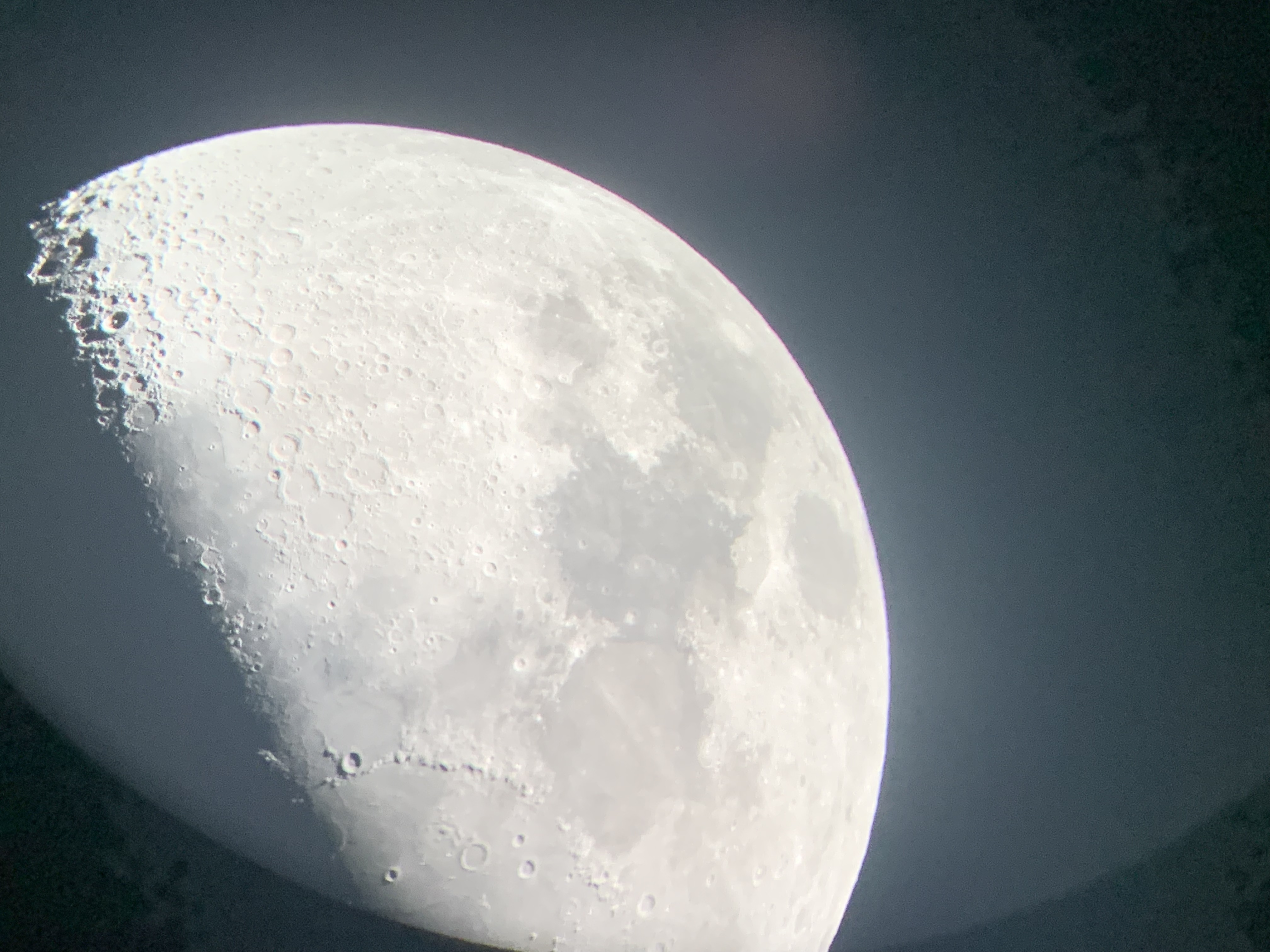
A photo of the moon taken with phone pressed to the big telescope viewfinder at Science Centre Observatory on 11 October 2024. Credit: Jamie Uy
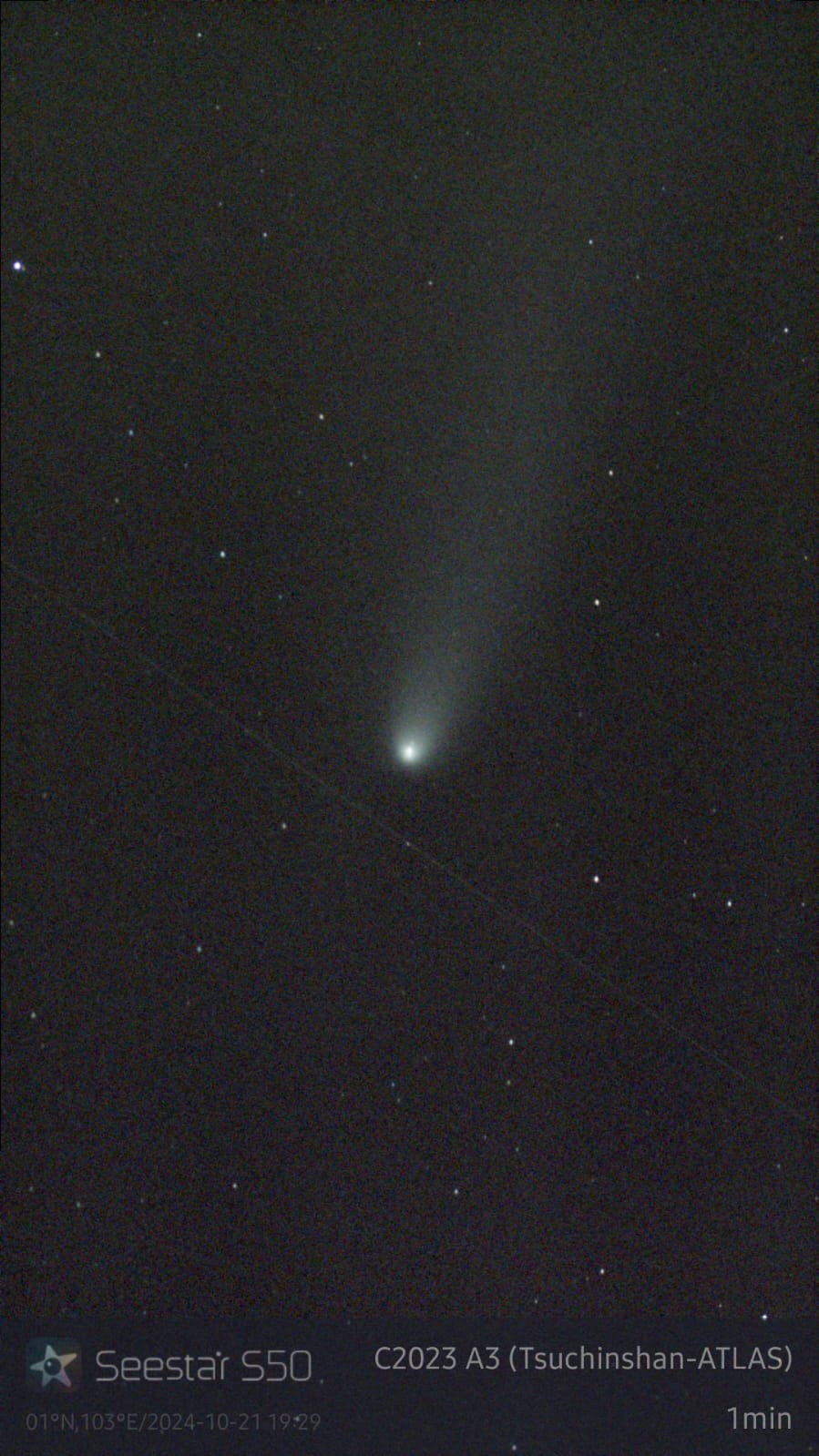
A photo of Comet C/2023 A3 (Tsuchinshan-ATLAS) taken with SeeStar S50 smart telescope at Science Centre on 21 October 2024.
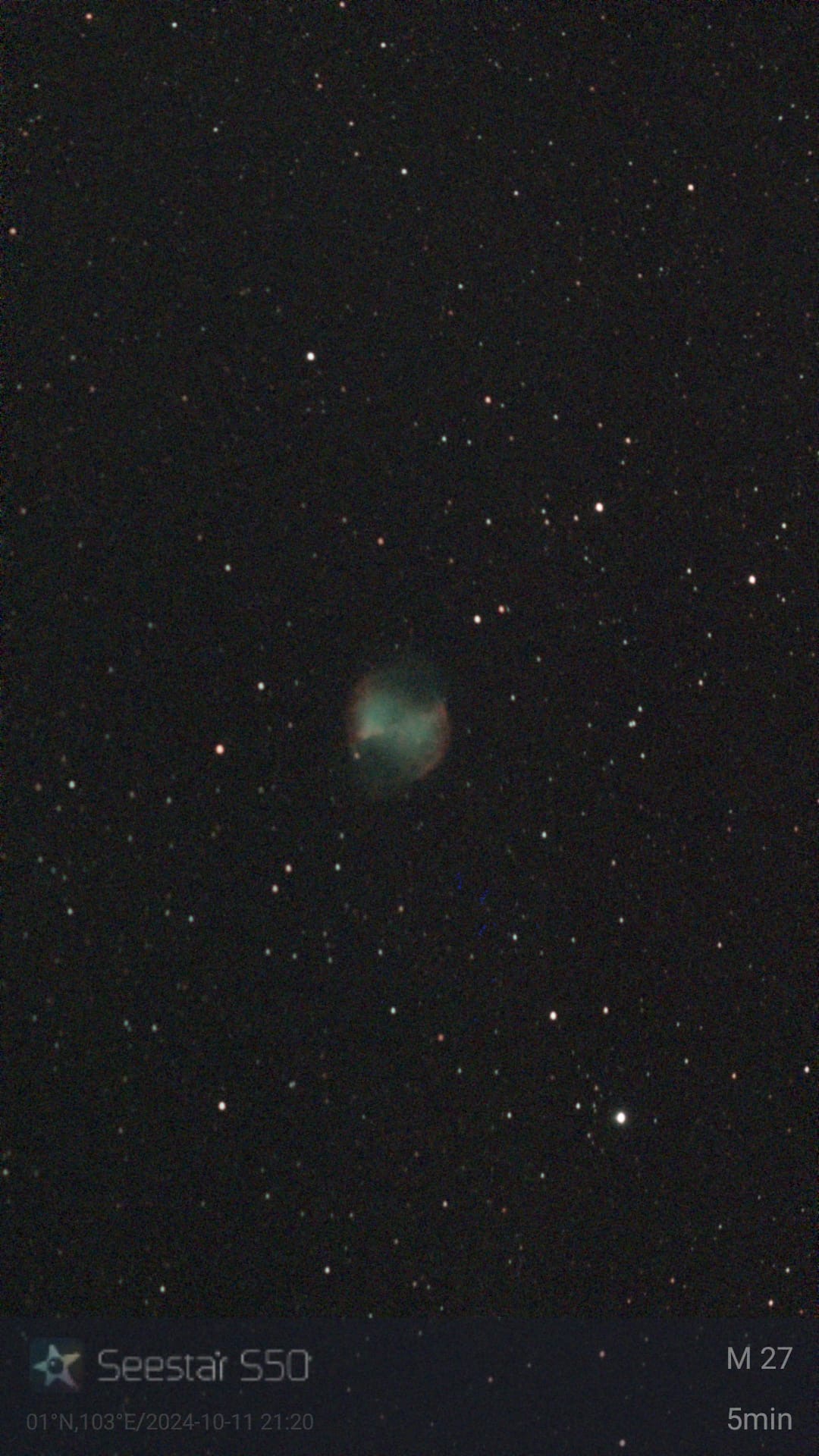
A photo of Messier 27 (M27), also known as the Dumbbell Nebula, taken with SeeStar S50 smart telescope at Science Centre on 11 October 2024.
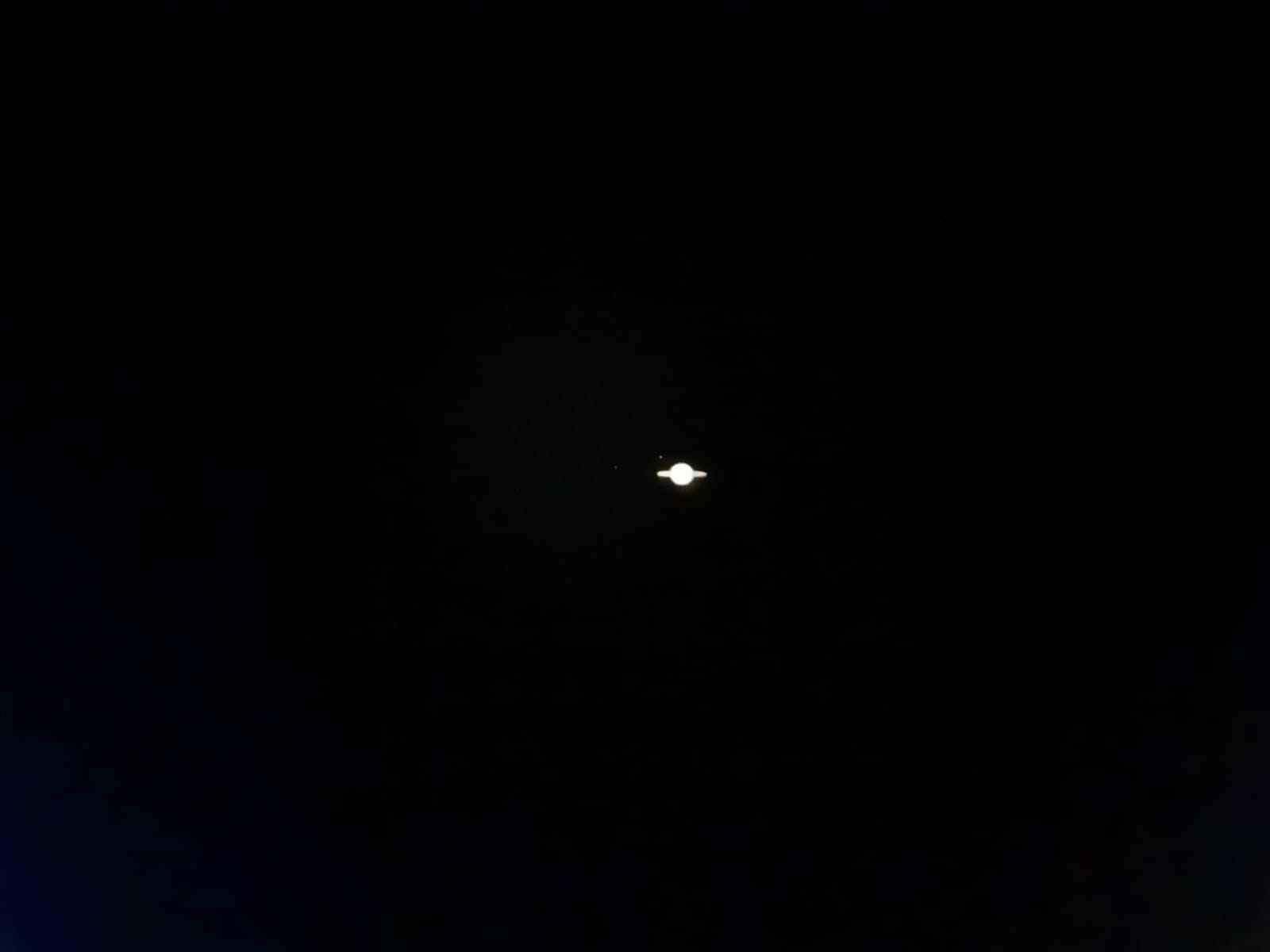
Tiny Saturn taken with phone pressed to the small dome telescope viewfinder at Science Centre Observatory on 11 October 2024. Credit: Jacy Mok
What does it mean for people in Singapore to gaze up to Saturn and beyond
in search of the stars?
The stargazing sessions at Science Centre Observatory are supported by passionate members of the public such as The Astronomical Society of Singapore (TASOS). To understand the everlasting appeal of stargazing, I interviewed Soh Kim Mun, the president of TASOS and longtime volunteer at the Science Centre Observatory over email.
A TASOS member since 1992, Soh's interest in astronomy started when he was in Secondary 3. "I was looking at the sky one clear evening when a shooting star flew [past] my view," he recalls.
"When I started stargazing in Singapore, I did not know I was stargazing. I plotted the stars position during the school year end holidays (those days not much entertainments other than riding bicycle at void decks)."
"One school holiday, I walked to the National Library... and I came across such a topic as Astronomy.... and behold, there is such a thing called Star Map!"
Soh and other TASOS members interact with visitors at the Observatory by operating telescopes and imparting astronomical knowledge.
"When we tell the public that they are looking at that or this blank space, they are always amazed by what they can see through the telescope as Singapore is a very light polluted city and it is very difficult to hunt the deep space objects," Soh shares.
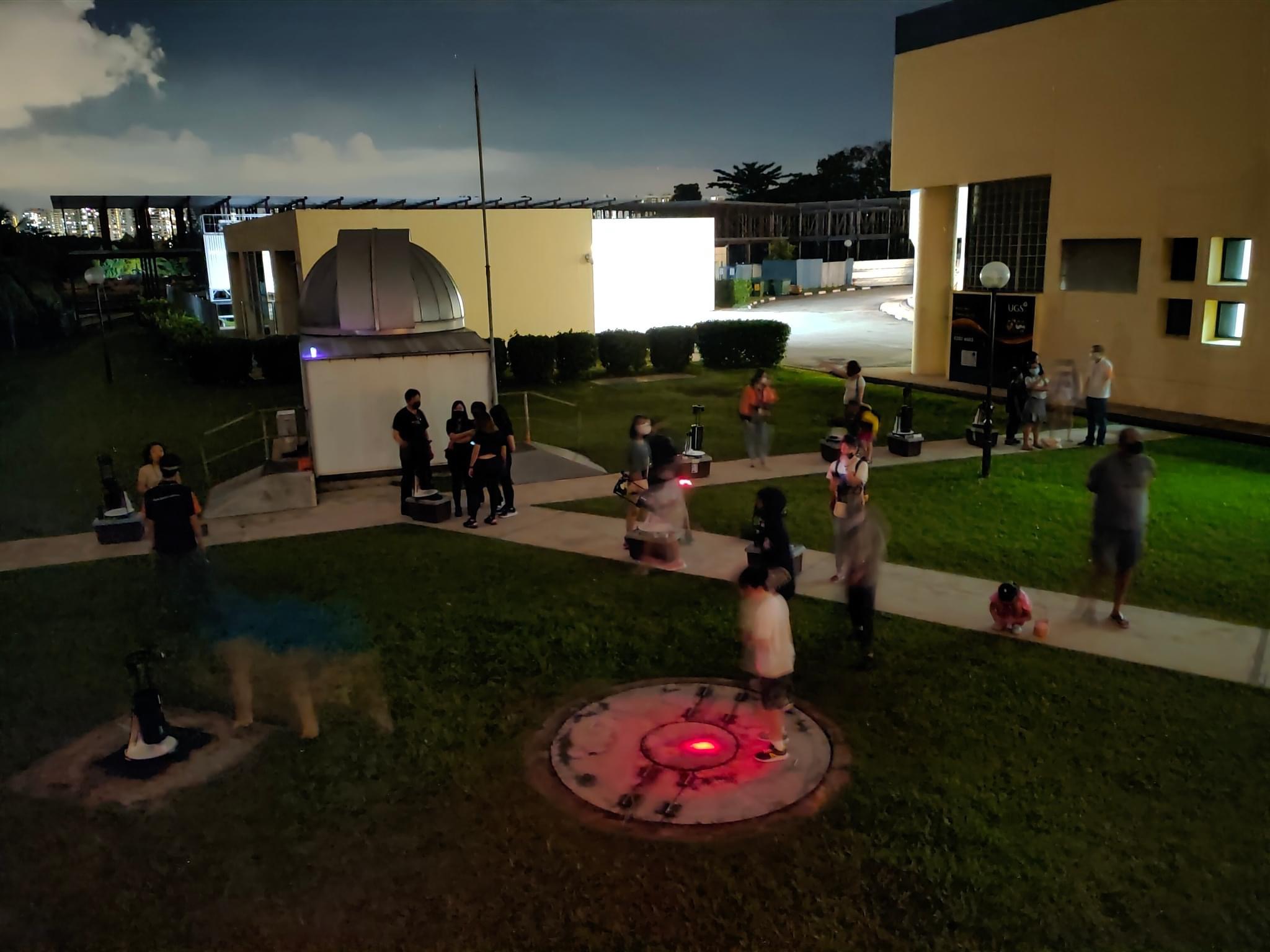
Visitors stargazing in the field at Science Centre Singapore. Credit: Science Centre Observatory
As I chat with the attendees, volunteers, and educators at the stargazing session, I get the sense that, in part, choosing to stargaze in fast-paced Singapore is a commitment to step back, slow down, and marvel at the wonders of our strange universe. And to accept that humans are not the centre of everything, just as Copernicus posited through his heliocentric model of the universe.
Although the Centre does their best to keep updated with the latest weather reports, rain can and does come at a moment's notice. Lim jests, "I can't control the weather!" when visitors are upset about poor weather impacting visibility of the stars.
Even when visitors do get to see impressive-sounding objects like Saturn, they may be disappointed when the telescope image doesn't match the textbook illustrations or James Webb Telescope photographs of a majestic planet in 4K detail and vibrant colours.
Soh states that the TASOS volunteers “[have to] explain that our human eye cannot compare with digital cameras and digital image processing.”
When I bring up the fact that visitors may be used to seeing high-resolution space images, Lim talks about how the astronomy experience is entirely different when visitors witness the cosmos for themselves, instead of secondhand.
He explains, "The light from the sun [goes] all the way to Saturn, then bounce[s] off Saturn, then come[s] all the way here right, and bounce[s] into your eyes. That's real. It's not you looking at a photo. It's real."
The stargazing sessions are especially popular with families with young kids, as the session is one of the activities on the I Am A Young Astronomer Young Scientist Badge Scheme.
Mok says that kids can ask surprisingly deep questions about astronomy. "Children will ask, what's the end of stars? What's the beginning of stars?"
On nights where deep-sky objects like the Orion Nebula are visible, Mok will explain that "this is the birthplace of stars."
However, the stargazing session also attracts visitors of all ages. When I attended the Friday 27 September 2024 session, a group of women were celebrating a bachelorette party at the Observatory. The Observatory has even received inquiries from visitors who would like to propose to their partners at the Observatory or Omni-Theatre.
While it may sound odd to stargaze in Singapore, it stands to reason that astronomy and space has captured the public's imagination. The passion of the Science Centre educators and volunteers shines through. Maybe we’ll even travel from the Little Red Dot to the Red Planet in the near future!
Crazy for the Cosmos
Eager to see the planets yourself? Head down to Science Centre Observatory to experience our digital planetarium show in the Omni-Theatre and stargazing in the field with our science educators every 1st, 2nd, and 4th Friday of the month, unless otherwise stated (please note that the last session for 2024 is on Friday 15 November). Tickets are available here.
Prefer to gaze at the cosmos from the comfort of your home? Watch our virtual viewing session of Comet C/2023 A3 (Tsuchinshan–ATLAS) live streamed on 17 Oct on the Science Centre Singapore YouTube channel below.
If you'd like to take a trip to space (no passport required!), visit Science Centre Singapore and be immersed in Space Explorers: THE INFINITE, the world's largest immersive space exploration experience. Through VR, you'll be transported 400 kilometres above Earth into the International Space Station. On this one-hour journey, you'll step into never-before-seen 360-degree videos captured in space. Admire mind-blowing views of Earth and explore the daily lives of astronauts. Get your tickets now at infinite-experience.com/singapore.
Written by Jamie Uy
Last updated: 1 November 2024

